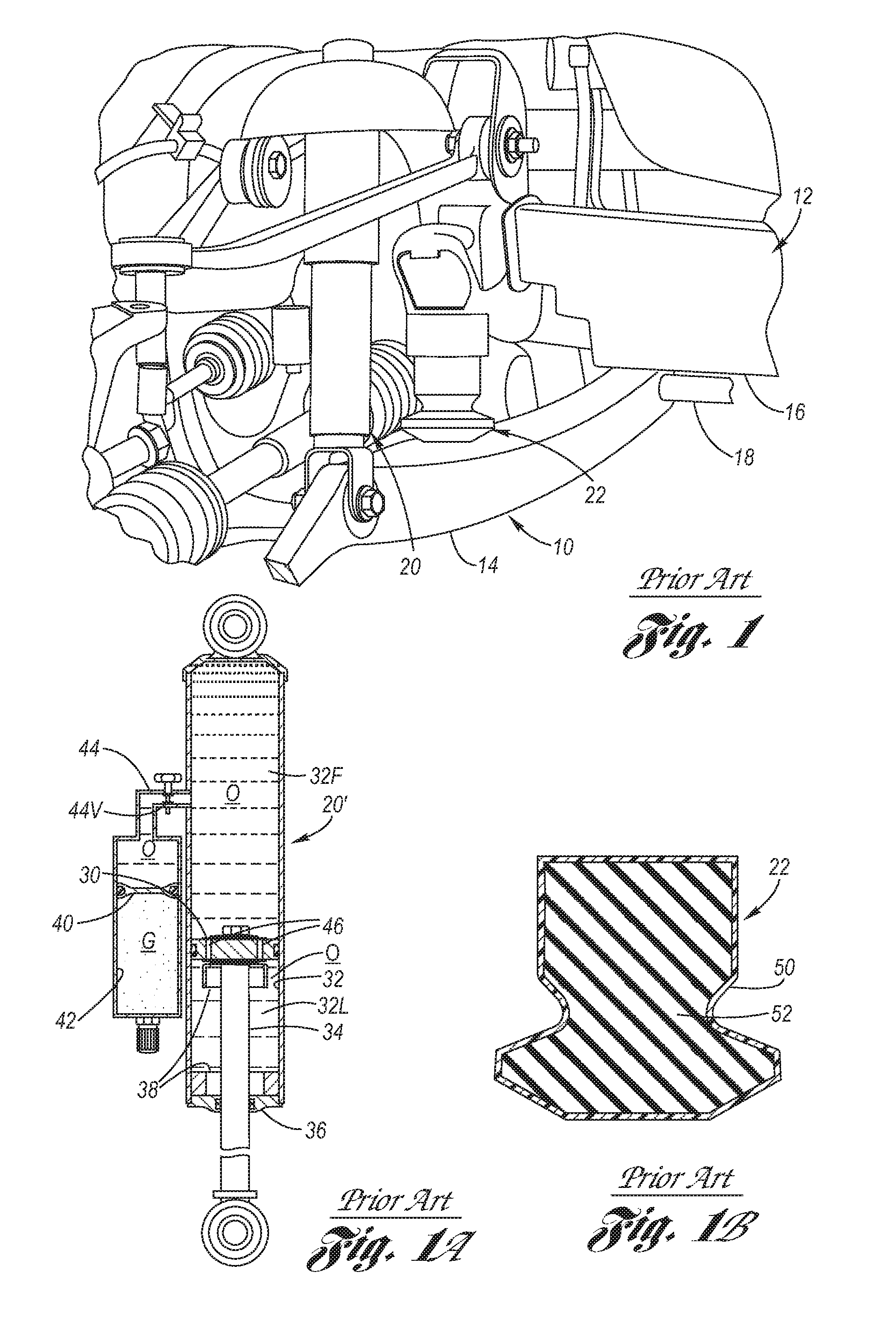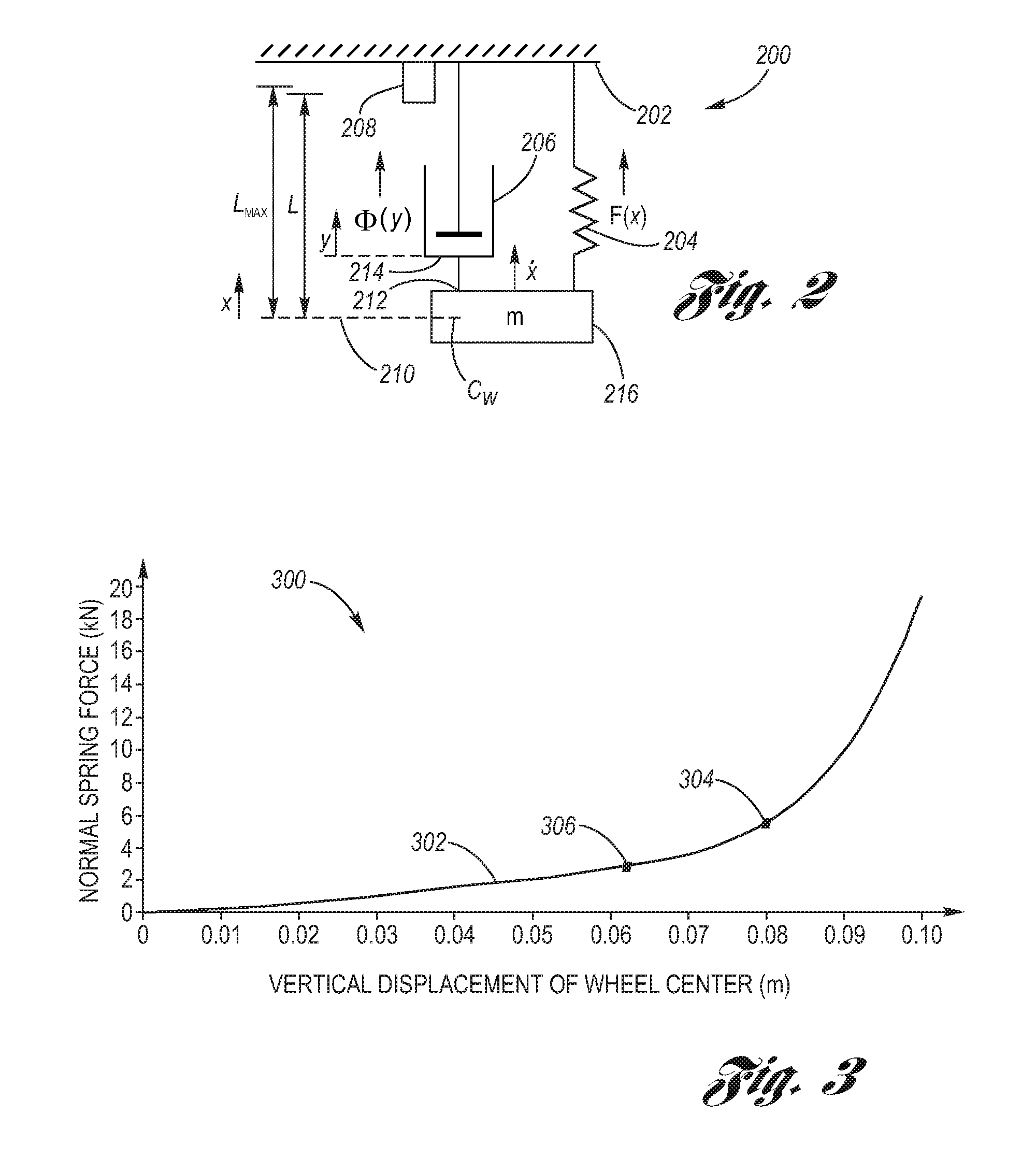Suspension system with optimized damper response for wide range of events
a suspension system and wide-range technology, applied in the direction of shock absorbers, instruments, cycle equipment, etc., can solve the problems of increased harshness, load management problems, wear of the conventional jounce bumper cushion and related dampers, etc., to reduce wheel travel, reduce harshness, and reduce the effect of trim heigh
- Summary
- Abstract
- Description
- Claims
- Application Information
AI Technical Summary
Benefits of technology
Problems solved by technology
Method used
Image
Examples
Embodiment Construction
[0059]Referring now to the Drawing, FIGS. 2 through 16B depict various aspects of the methodology to provide optimized damping in a motor vehicle suspension system.
[0060]Generally speaking, the performance of motor vehicles under severe road events is tested using a pavement, which includes a series of potholes. For example, a minor pothole would be a shallow pit, and more pronounced pothole would be a deeper pit capable of causing passengers to feel a bounce; and a “severe event” pothole would be a box-shaped drop-off pit with a hard, square edge at the back.
[0061]The following analysis is focused on motor vehicle suspension response to traversal of a “severe event” pothole. During a “severe event” pothole traversal, the wheel first falls into the pothole, followed by the falling body corner, and then, in an already jounced position (compared to nominal trim position), hits a steep bump approximating a step. Tire forces then accelerate the wheel and the suspension goes into a deep ...
PUM
 Login to View More
Login to View More Abstract
Description
Claims
Application Information
 Login to View More
Login to View More - R&D
- Intellectual Property
- Life Sciences
- Materials
- Tech Scout
- Unparalleled Data Quality
- Higher Quality Content
- 60% Fewer Hallucinations
Browse by: Latest US Patents, China's latest patents, Technical Efficacy Thesaurus, Application Domain, Technology Topic, Popular Technical Reports.
© 2025 PatSnap. All rights reserved.Legal|Privacy policy|Modern Slavery Act Transparency Statement|Sitemap|About US| Contact US: help@patsnap.com



